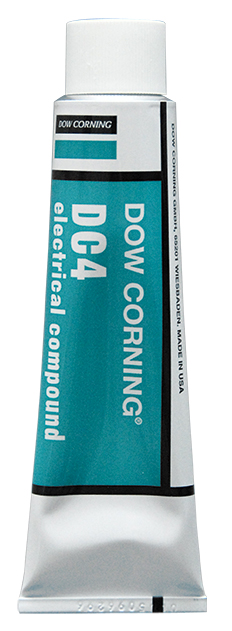Silicone DOW CORNING 4 paste REACh compliant:
 DOW CORNING 4 Silicone Paste is used in aerospace, automotive and marine applications as a humidity resistant seal in ignition systems, spark plug lugs, wiring box connection boxes, Assemblies and electrical terminals.
DOW CORNING 4 Silicone Paste is used in aerospace, automotive and marine applications as a humidity resistant seal in ignition systems, spark plug lugs, wiring box connection boxes, Assemblies and electrical terminals.
DC 4 silicone paste is also used as a lubricant for cable connectors, battery terminals, switches.
The DOW CORNING 4 PASTE has the following specifications: MIL-S-8660C, MILITARY SPECIFICATION: SILICONE COMPOUND, NATO CODE NUMBER S-736 (22 SEP 1983) [S / S BY SAE-AS8660].
These specifications make it a product of choice for non-hardening silicone pastes used in electrical connections and electronic equipment.
Its properties also give excellent corrosion resistance and exceptional humidity resistance.
Reminder of European regulations REACh:
Article 33 of REACh stipulates that any supplier of a product containing a substance of very high concern (SVHC) with a content greater than 0.1% by mass must inform its users.
Boric acid is a substance which is contained in certain Paste Silicones on the market.
Boric acid (CAS number: 10043-35-3 has been on the SVHC list since June 18, 2010.
Boric acid is Reprotoxic 1B, H360FD: May impair fertility. May damage the fetus.
SAMARO and DOW CORNING strive to provide products that protect and extend the life of your processes and users.
And :
| DOW CORNING 4 | Competitor B widely used | |
| Information Point 3 of the Safety Data Sheet CLP version |
No mention of Boric Acid |
Boric acid mentioned
(>> 0.1%) |
External links :echa.europa.eu / eur-lex.europa.eu